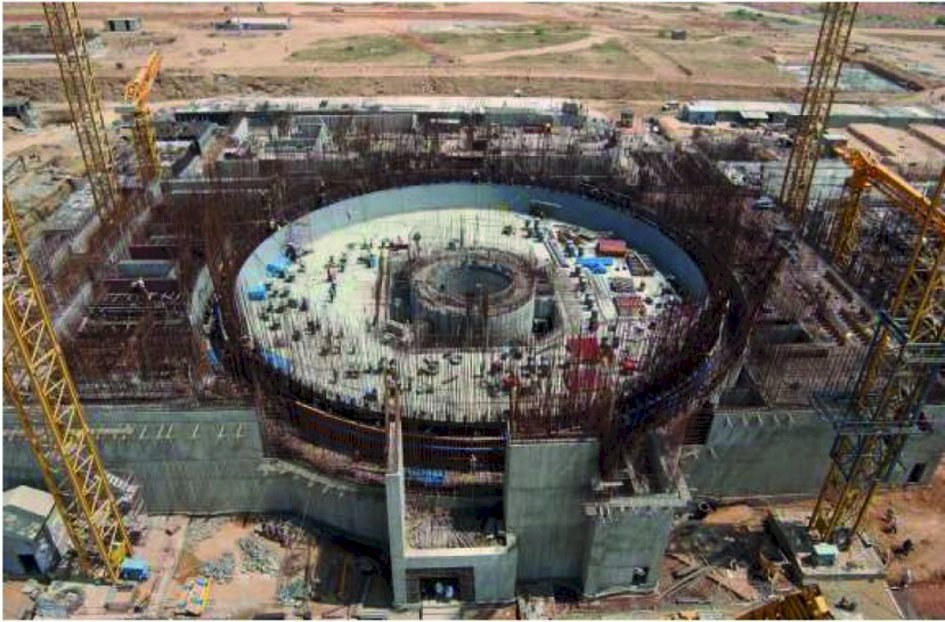Nuclear Energy and Nuclear Power Plant
Nuclear energy is the energy generated through fission. It is generated through fusion, fission and half-life reactions. Nuclear energy is a very significant and massive source of energy for today’s world. Nuclear power plants have become an argued subject since the entire world is tending towards renewable energy resources in the recent years and considering the damages suffered by people and the environment due to the nuclear accidents in the past. Despite that, number of the countries which have nuclear power plants is not few. In our country, construction of Akkuyu Nuclear Power Plant project is still ongoing.
Since radiation occurs as a result of radioactive reactions, importance of the building material used in the construction of nuclear power plant becomes very significant. The building material is required to be capable of damping the generated radiations. When you analyze different building materials and their capability of damping the radiations it is seen that heavyweight concrete is the most suitable material for construction of the reactors of nuclear power plants in particular. The following figure depicts radiations and penetration performances of the particles through various materials. We see that gamma rays which are capable of passing through many materials are damped by heavyweight concrete. In this sense, we can see how important heavyweight concrete is for nuclear power plant projects.
Heavyweight Concrete & Nuclear Power Plant Applications
According to TS EN 206, concretes with a unit volume mass higher than 2600 kg/m3 are referred to as heavyweight concrete; aggregates with a unit volume mass higher than 3000 kg/m3’den are referred to as heavyweight aggregate. Areas of use of heavyweight concrete are as follows:
• Primary and secondary shield structures of nuclear power plants
• Radioactive waste storage areas
• Radiotherapy rooms.
Features required in shield structures of nuclear power plants are as follows:
• Radiological protection,
• Structural integrity,
• High pressure strength
• Durability
Heavyweight concretes with high density and special properties suitable for this purpose are used.
Nuclear Power Plant Reactor Layers
The reactor has multiple layers. It is specially designed since very significant radioactive reactions will occur inside. While concrete structures of various properties are present between reactor layers, steel layers are present too. Layers of the reactor are shown in the following figure:
When analyzing the structure towards inside, a reactor vessel made of steel is located in the core of the reactor and the section which contains the reactor fuel is located inside. There is a two-layer concrete structure surrounding this section and it is called primary shield structure. One of the concrete layers is coated with lead and enveloped in a thick steel lining from inside – outside. This layer is also referred to as Bio-Shield. The following layer also consists of a reinforced concrete structure (dry well wall). Containment vessel made of thick steel surrounds the entire structure and shield building wall forms the outermost layer. We can call the outermost reinforced concrete structure as secondary protection structure. When we analyze the reactor layers located in a nuclear power plant, we can see that concretes of specific attributes are used in different layers.
Photo of actual construction of a reactor, drawing of which is shown above:
You can see the primary shield structure around the reactor core and the outermost secondary shield on the photo.
Heavyweight Concrete Aggregate
Since most of the concrete is made up of aggregate by volume, aggregate plays an important role in heavyweight concrete production. Concrete aggregate plays an important role in modification of the physicochemical properties of the concrete and concrete properties . Since heavyweight aggregates contain a mixture of many heavy elements, they offer good protective properties to the concrete ensuring damping of neutrons and photons. Natural aggregates such as haematite, barite, magnetite, limonite, serpentine and artificial aggregates which contain materials such as iron and steel may be used as heavyweight aggregate. Desired properties of heavyweight concrete aggregate are as follows:
• Unit volume mass to be higher than 3000 kg/m3
• Being inert against alkalis
• Low and harmless clay content
• Appropriate particle size distribution
Chemical Concrete Admixtures
Conventional concretes are also used in addition to heavyweight concretes in nuclear power plant projects for constructing reactors. Suitable types of admixtures shall be selected according to TS EN 934:2 Chemical Concrete Admixtures standard according to the requirements of the concrete to be produced. We can list the most used admixture types as Table 2 – 3.1 and 3.2 – 6 – 8 – 10 – 11.1 and 11.2 – 12 – 13. We can list the desired properties in chemical admixtures as follows:
• Optimal water reduction performance
• Optimal slump retention performance
• Workability
• Low air content
• Cohesive property


